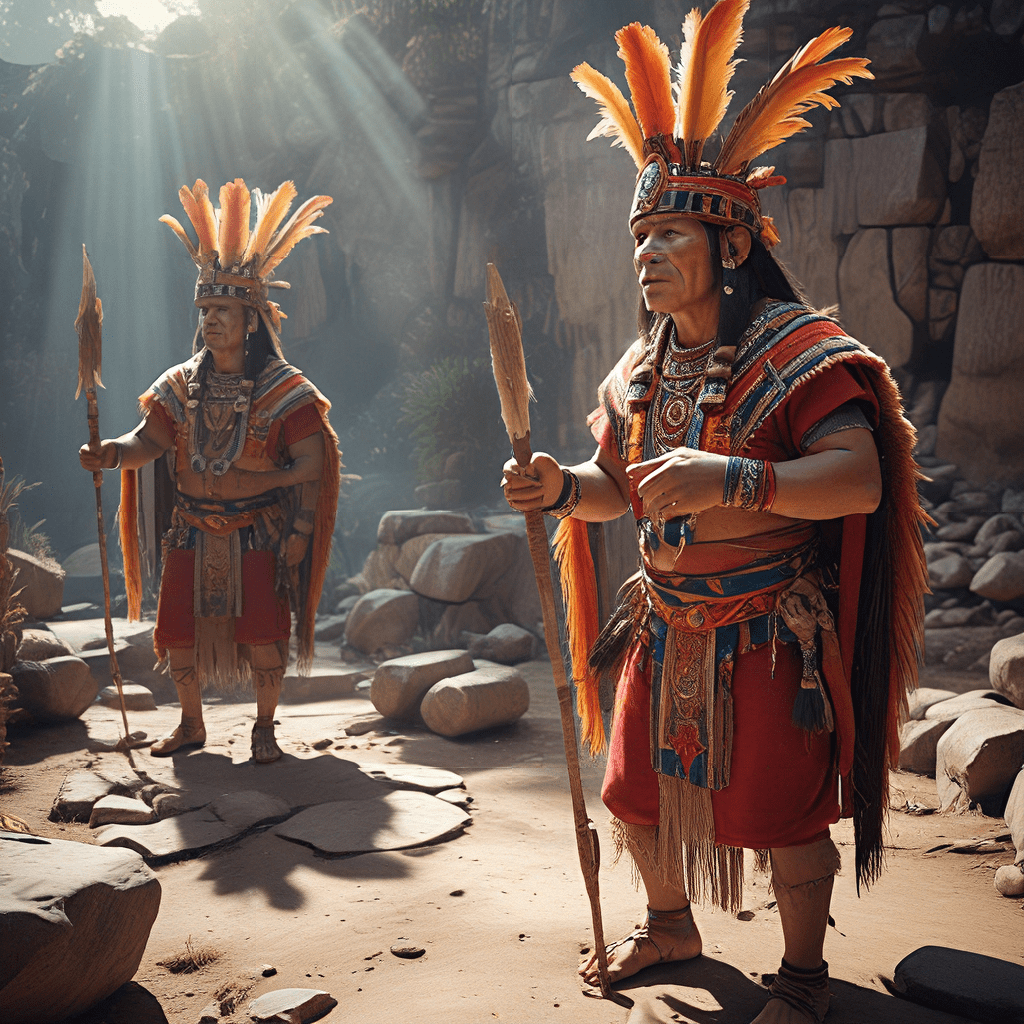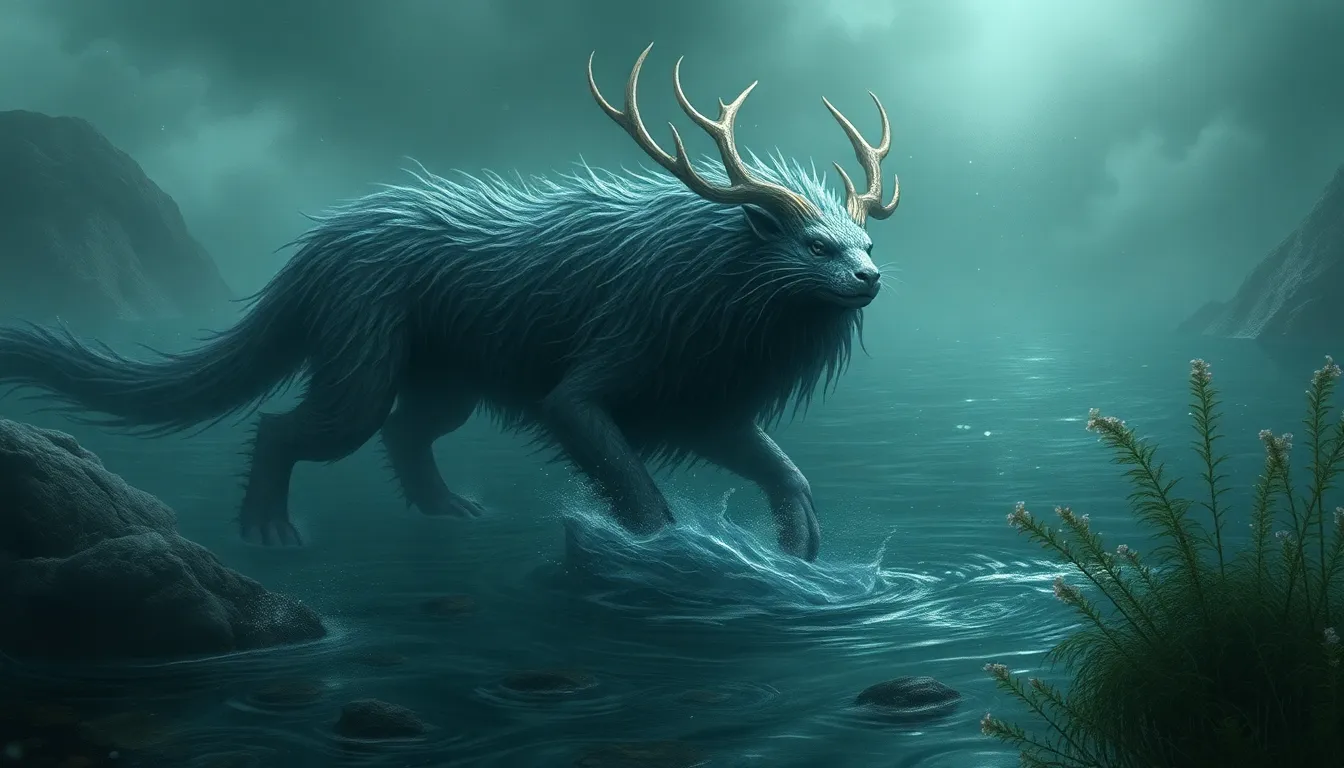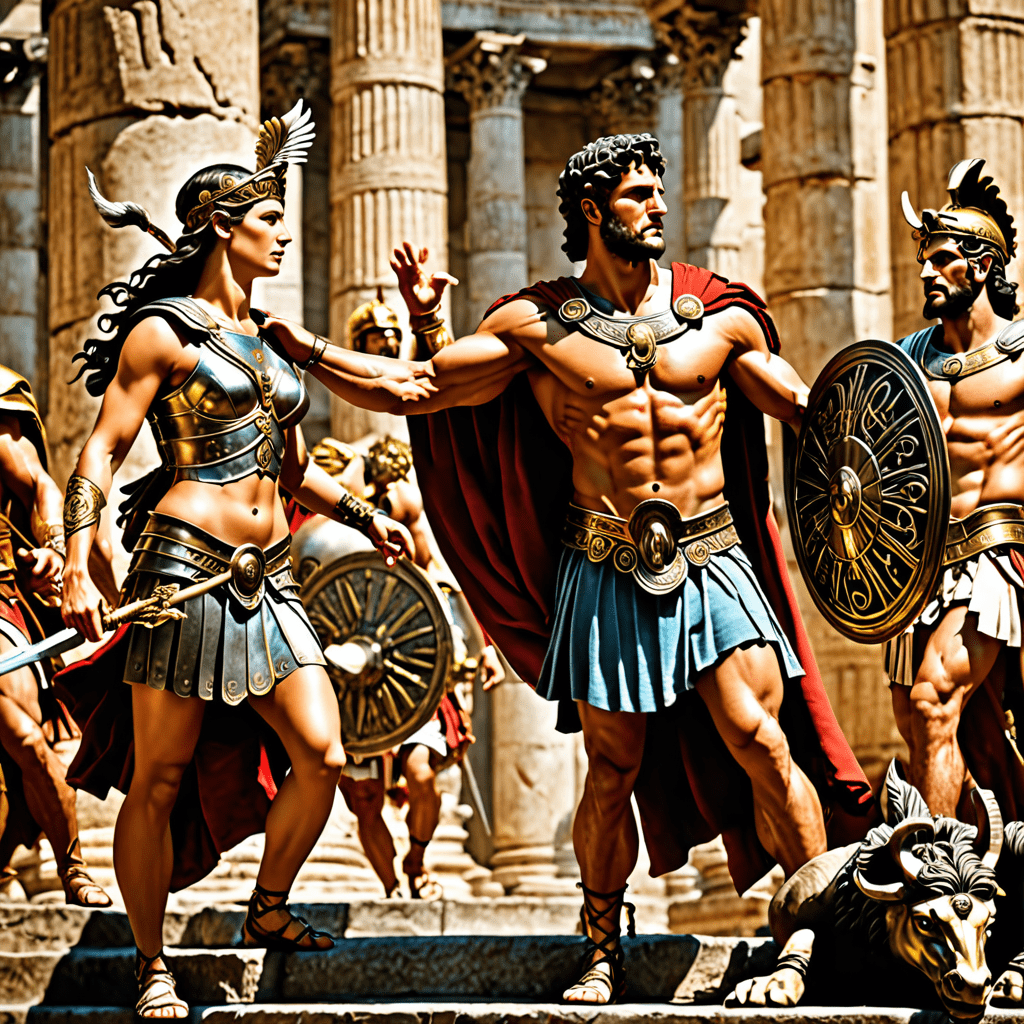The Sacred Landscape: Incan Cosmology and the Interconnectedness of All Things
The Incan civilization, known for its impressive architectural feats and intricate social structures, also possessed a rich and complex spiritual world. Their beliefs revolved around the concept of "Pachakuti," a cyclical view of time and existence. This concept saw the universe as a vast and interconnected web, where everything was intricately linked through a shared energy. The Inca people believed that humans, animals, plants, and even the rocks and mountains were all part of this web, constantly influencing and being influenced by one another.
This interconnectedness extended to the natural world, which was seen as a sacred space teeming with powerful spirits and divine forces. The Incan cosmos, according to their beliefs, was divided into three interconnected realms:
- Hanan Pacha: The Upper World, the realm of the sun, the moon, and the stars.
- Kay Pacha: The Middle World, the realm of humans and living beings.
- Ukhu Pacha: The Lower World, the realm of the ancestors, spirits, and the earth itself.
These realms were not seen as separate but rather as interconnected parts of a single, living organism. This belief shaped the Inca people's relationship with the natural world, leading to a profound reverence for the environment and the divine forces that resided within it.
The Sun, the Moon, and the Stars: Celestial Bodies as Divine Actors in Incan Myth
The Inca people viewed the celestial bodies as powerful deities, playing crucial roles in their lives and the functioning of the universe. At the heart of their cosmology stood the Sun God, Inti, considered the most important deity. Inti was seen as the source of life, warmth, and fertility, responsible for the growth of crops and the well-being of the people. The Moon Goddess, Mama Killa, was seen as Inti's counterpart, representing the lunar cycles, fertility, and the female principle. She played a significant role in the Incan calendar, her phases marking important agricultural periods and festivals.
The stars, too, had their place in Incan mythology. Each constellation held its own significance, with certain stars associated with specific events and deities. The milky way, known as "Mayu," was seen as a celestial river that connected the earthly world to the divine realm. The Inca people used their knowledge of the stars for navigation, timekeeping, and predicting agricultural cycles.
Pachamama: The Earth Mother and Her Role in Incan Rituals
The Incan concept of Pachamama embodied the earth as a living, breathing entity. She was seen as the Earth Mother, the embodiment of fertility, abundance, and nurturing power. She provided for all living beings, offering sustenance and life-giving energy. Pachamama was recognized as a powerful force, demanding respect and reverence from those who lived on her surface.
The Inca people believed that Pachamama had the ability to both nourish and punish, depending on how she was treated. They performed numerous rituals and offerings to appease her and ensure her favor. These rituals often involved burying coca leaves, food, and other precious objects within the earth, symbolizing their gratitude and seeking her blessings.
The Apu: Mountain Spirits as Guardians of the Sacred Land
The Apu, or mountain spirits, were considered powerful deities in Incan mythology. They were seen as the guardians of the sacred land, protectors of the people, and intermediaries between the human world and the divine realm. The Inca people held a deep reverence for mountains, seeing them as living entities with their own personalities and spirits.
Each mountain had its own Apu, who was believed to possess unique powers and influence over the surrounding land, weather patterns, and the lives of the people. The Inca people would often offer prayers, sacrifices, and coca leaves to the Apu, seeking their protection and blessings. They believed that honoring the Apu was crucial for maintaining cosmic harmony and ensuring the well-being of their communities.
Offering and Sacrifice: Honoring the Divine and Maintaining Cosmic Balance
The Incan civilization placed great importance on offering and sacrifice, believing these practices were essential for maintaining cosmic balance and preserving their relationship with the divine. Offering involved giving gifts to the gods, expressing gratitude and seeking their favor. This could take the form of food, coca leaves, precious metals, or even human sacrifice, depending on the occasion and the deity being honored.
Sacrifice was seen as a way to appease the gods, maintain harmony between the realms, and ensure the continuation of life and prosperity. It was believed that the gods would accept these offerings, providing protection, fertility, and blessings in return. The act of sacrifice was often accompanied by ritualistic ceremonies that involved prayer, music, and dance, creating a sacred space where the human and divine could interact.
The Inti Raymi Festival: Celebrating the Sun God and Renewal of Life
The Inti Raymi, also known as the "Festival of the Sun," was the most important festival in the Incan calendar. It was a grand celebration honoring Inti, the Sun God, and the renewal of life. Held on the winter solstice, around June 24, this festival marked the end of the harvest season and a time of rebirth and renewal.
Inti Raymi was a time of great celebration, with elaborate ceremonies, processions, and feasts. The festival took place over several days, with each day dedicated to specific rituals and activities. Here's a glimpse into the key aspects of this important event:
The Procession: The festival began with a grand procession from the Coricancha, the Sun Temple in Cuzco, to the Sacred Plaza. The procession involved priests, nobles, dancers, and musicians, all adorned in elaborate costumes and carrying offerings of gold, silver, and coca leaves.
The Offering to Inti: At the Sacred Plaza, the Inca ruler, known as the Sapa Inca, would perform a solemn ceremony offering sacrifices to Inti. This often involved the sacrifice of llamas and even human beings, accompanied by prayers and songs.
The Sacred Fire Ceremony: A sacred fire would be lit, symbolizing the Sun's power and its role in nourishing life. The fire was kept burning throughout the festival, symbolizing the hope for a bountiful harvest in the coming season.
- The Feast: There were grand feasts throughout the festival, often lasting for days. The Inca people would celebrate with music, dance, and song, sharing food and drink with their communities.
The Coya Raymi Festival: Honoring the Moon Goddess and the Cycle of Fertility
The Coya Raymi, also known as the "Festival of the Moon," was a festival celebrating Mama Killa, the Moon Goddess, and her role in the cycle of fertility. Held around the full moon in August, this festival marked a time of preparation for the upcoming planting season.
The Coya Raymi was a time of celebrating the feminine aspects of nature, acknowledging Mama Killa's influence on the tides, the growth of plants, and the well-being of women. The festival was also a time for honoring the Inca Queen, known as the Coya, who was seen as a symbol of fertility and the feminine power.
Important aspects of this festival included:
Ceremony and Offerings: The festival began with a ceremony honoring Mama Killa. The Inca Queen would often present offerings of flowers, fruits, and coca leaves to the moon goddess, seeking her blessings for a bountiful harvest and a healthy new year.
The Moon's Influence on Fertility: The festival was a time for the Inca people to reflect on the influence of the moon on fertility and the cycles of nature. Rituals were performed to ensure the blessings of Mama Killa, particularly for women who were hoping for a successful pregnancy.
Festivities and Celebrations: The festival was a time of feasting, dancing, and music, celebrating the moon goddess and the promise of renewal. The Inca people would gather in their communities, enjoying the food and drink, and reveling in the joy of the coming new year.
The Capac Raymi Festival: Celebrating the Harvest and the Abundance of the Earth
The Capac Raymi, also known as the "Festival of the Harvest," was a celebration of the abundance of the earth and the blessings of Pachamama, the Earth Mother. Held in September, this festival marked the end of the agricultural cycle and the time of gathering the harvest.
The Capac Raymi was a time for expressing gratitude to Pachamama and celebrating the bounty she had provided. It was also a time of community, as the Inca people came together to share their harvests and enjoy the fruits of their labor.
Key aspects of this festival included:
Offering to Pachamama: The Inca people would offer gifts to Pachamama, thanking her for the bounty she had provided and seeking her blessings for the coming year. These offerings often involved burying food, coca leaves, and other precious objects within the earth.
Thanksgiving and Feasts: The Capac Raymi was a time for feasting and celebrating with family and community. The Inca people would enjoy the fruits of their harvest, share their bounty with friends and neighbors, and offer prayers of gratitude to Pachamama.
Harvest Rituals: The festival often involved rituals related to agriculture, symbolizing the cycle of life, death, and rebirth. The Inca people would perform dances and songs to ensure the fertility of the earth for the coming year.
Interpreting Incan Rituals: Theories of Ritual Function and Social Control
The Incan rituals were not just about religious beliefs; they served a deeper purpose. Scholars believe the rituals played an important role in maintaining social order, reinforcing the power of the ruling class, and uniting the communities.
Here are some theories about the function of Incan rituals:
Social Control and Power: The rituals helped solidify the Inca rulers' authority by showcasing their connection to the divine and their ability to access supernatural powers. The sacrifices, offerings, and grandiose festivals served to impress upon the population the power and legitimacy of the ruling class.
Community Building and Unity: The rituals also served to strengthen the bonds between members of the community. By engaging in shared rituals and celebrations, the Inca people reinforced their sense of belonging and solidarity.
Maintaining Cosmic Balance: The rituals were believed to maintain a harmonious relationship with the divine, ensuring the well-being of the community and the continuation of life. The offerings and sacrifices were a way of appeasing the gods and acknowledging their power over nature and human existence.
The Legacy of Incan Rituals: Echoes of Tradition in Modern Andean Culture
Although the Incan Empire fell centuries ago, the legacy of their rituals and beliefs continues to resonate in the Andes Mountains today. Many aspects of Incan traditions have been preserved and adapted by indigenous cultures, particularly in Peru and Bolivia.
Modern Andean communities still perform rituals honoring the Earth Mother, the Sun God, and the powerful mountain spirits. These rituals are often woven into their daily lives, with festivals, celebrations, and ceremonies celebrating the cycles of nature and the interconnectedness of all things.
The Incan ceremonies provide a fascinating window into the rich spiritual world of the ancient Inca civilization. Their belief in a sacred and interconnected universe continues to inspire and influence the lives of people in the Andes Mountains today.
FAQ
Q: What was the most important festival in the Incan calendar?
A: The most important festival was the Inti Raymi, or the Festival of the Sun, celebrating the Sun God Inti.
Q: What was the role of the Inca Queen in the Coya Raymi festival?
A: The Inca Queen, known as the Coya, was seen as a symbol of fertility and the feminine power, and she played a key role in honoring Mama Killa, the Moon Goddess.
Q: What were some of the offerings made to Pachamama?
A: The Inca people would offer gifts to Pachamama, such as food, coca leaves, and other precious objects, buried within the earth.
Q: How did the Incan rituals contribute to social control?
A: The rituals helped solidify the Inca rulers' authority, reinforce the power of the ruling class, and unite the communities.
Q: How do the Incan rituals continue to influence Andean culture today?
A: Many aspects of Incan traditions have been preserved and adapted by indigenous cultures in Peru and Bolivia, with festivals and ceremonies celebrating the cycles of nature and the interconnectedness of all things.


